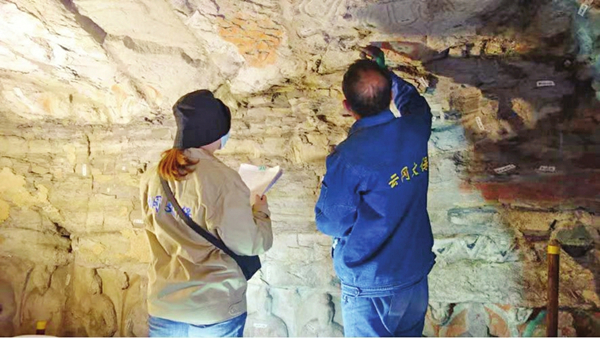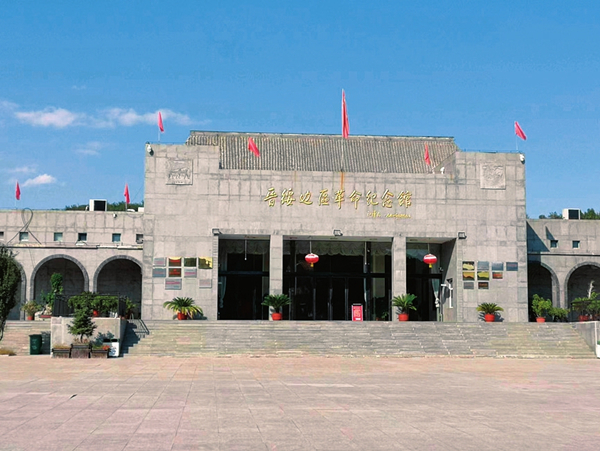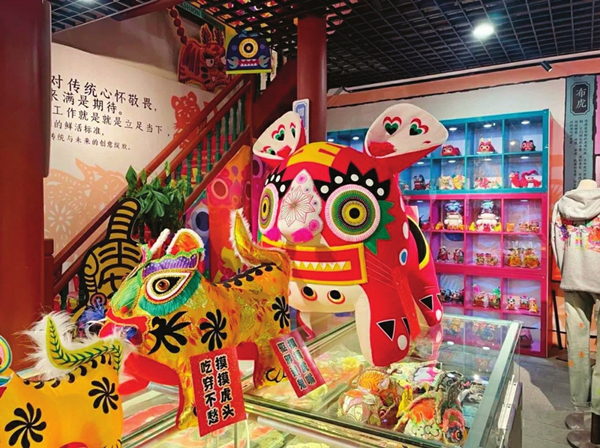Traditional culture revives with protection of relics
Updated: 2022-05-23

Technicians carry out daily maintenance in the Yungang Grottoes in Datong. [Photo/Shanxi Daily]
North China's Shanxi province has been focusing on the protection of its cultural relics and the innovative development of its traditional culture in recent years.
The province has promoted three UNESCO world cultural heritage brands – the Ancient City of Pingyao, the Yungang Grottoes and Mount Wutai – and undertaken conservation and protection projects for local national cultural relics.
In one of them, Shanxi has paid attention to the preventive protection of the Yungang Grottoes, while keeping daily maintenance and monitoring. The research and studies of the Yungang Grottoes – especially the cultural exchanges and integration of various ethnic groups behind them – have been furthered.
Moreover, the province has increased its investment in cultural relics protection.
In 2021 alone, it pumped 160 million yuan ($24.02 million) into protecting and restoring 145 ancient buildings, painted sculptures and murals, and 17.97 million yuan into renovating 12 major sections of the Great Wall.
Elsewhere, it spent more than 34 million yuan on protection projects for cultural relics concerning the revolutionary history of the Communist Party of China (CPC), 30.15 million yuan on the digital protection of 13 key cultural relics, as well as 23.52 million yuan in restoring over 1,000 cultural relics collected in museums.

The Jinsui Revolutionary Memorial Hall in Caijiaya village [Photo/Shanxi Daily]
To protect its cultural resources realted to the revolutionary history of the CPC, Shanxi has successively issued regulations, policies and measures.
In December 2020, the Shanxi Cultural Relics Bureau announced the first list of revolutionary cultural relics in the province, involving 687 related cultural relics sites and 4,478 cultural relics (sets). What's more, the province's 101 counties have been included into the Shanxi-Hebei-Henan, Jinsui and Jinchaji revolutionary cultural relics protection and utilization areas.
To make cultural relics more vivid in modern times, museums in Shanxi have jointly established a museum alliance to carry out exchanges and cooperation on cultural relics protection and exhibition.
From 2012 to 2022, the museums in the province have grown in number from 63 to 192. They held over 1,300 exhibitions and over 140,000 educational activities, and received 140 million visits during the period.
The Yellow River Basin Museum Alliance has been founded to promote the protection and promotion of the culture in the basin.

Cloth tiger toys, one of intangible cultural heritage items in Shanxi, go on display in Taiyuan city. [Photo/Shanxi Daily]
Furthermore, the protection system for intangible cultural heritage has been enhanced in the province. In 2021, 14 intangible cultural heritage items were rated as national ones, while the number of people engaged there in passing down intangible cultural heritage and in protection ranked third in China.
Related reading
Shanxi to industrialize intangible cultural heritage protection



